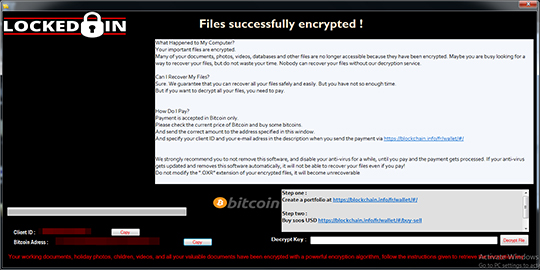RANSOM_HIDDENTEAROXAR.A
Ransom.Oxar(Malwarebytes)
Windows


Threat Type: Ransomware
Destructiveness: No
Encrypted: No
In the wild: Yes
OVERVIEW
Dropped by other malware, Downloaded from the Internet
This Ransomware arrives on a system as a file dropped by other malware or as a file downloaded unknowingly by users when visiting malicious sites.
It encrypts files with specific file extensions. It encrypts files found in specific folders.
TECHNICAL DETAILS
665,600 bytes
EXE
No
11 Jul 2017
Displays message/message boxes, Encrypts files
Arrival Details
This Ransomware arrives on a system as a file dropped by other malware or as a file downloaded unknowingly by users when visiting malicious sites.
Installation
This Ransomware creates the following folders:
- %User Profile%\AppData\Presector - (Hidden Attribute)
(Note: %User Profile% is the current user's profile folder, which is usually C:\Documents and Settings\{user name} on Windows 2000, XP, and Server 2003, or C:\Users\{user name} on Windows Vista and 7.)
It adds the following mutexes to ensure that only one of its copies runs at any one time:
- 54GDFB54Vf45415BGD64F5V4C6554V6D5WX4151F65DS165FE1S6G4F81VER6SD5C165
Ransomware Routine
This Ransomware encrypts files with the following extensions:
- *.7z
- *.aif
- *.apk
- *.arj
- *.asp
- *.bat
- *.bin
- *.bin
- *.cab
- *.cda
- *.cer
- *.cfg
- *.cfm
- *.cpl
- *.css
- *.csv
- *.cur
- *.dat
- *.deb
- *.dmg
- *.dmp
- *.doc
- *.docx
- *.drv
- *.gif
- *.htm
- *.html
- *.icns
- *.iso
- *.jar
- *.jpeg
- *.jpg
- *.js
- *.jsp
- *.log
- *.mid
- *.mp3
- *.mp4
- *.mpa
- *.odp
- *.ods
- *.odt
- *.ogg
- *.part
- *.php
- *.pkg
- *.png
- *.png
- *.png
- *.ppt
- *.pptx
- *.ps
- *.psd
- *.py
- *.py
- *.rar
- *.rpm
- *.rss
- *.rtf
- *.sql
- *.svg
- *.tar.gz
- *.tex
- *.tif
- *.tiff
- *.toast
- *.txt
- *.vcd
- *.wav
- *.wks
- *.wma
- *.wpd
- *.wpl
- *.wps
- *.wsf
- *.xlr
- *.xls
- *.xlsx
- *.z
- *.zip
- .jpg
It encrypts files found in the following folders:
- %Desktop%
- %User Profile%\Music
- %User Profile%\Documents
- %User Profile%\Pictures
- %User Profile%\Videos
- %User Profile%\Downloads
- Removable Drives
(Note: %Desktop% is the desktop folder, where it usually is C:\Documents and Settings\{user name}\Desktop in Windows 2000, Windows Server 2003, and Windows XP (32- and 64-bit); C:\Users\{user name}\Desktop in Windows Vista (32- and 64-bit), Windows 7 (32- and 64-bit), Windows 8 (32- and 64-bit), Windows 8.1 (32- and 64-bit), Windows Server 2008, and Windows Server 2012.. %User Profile% is the current user's profile folder, which is usually C:\Documents and Settings\{user name} on Windows 2000, XP, and Server 2003, or C:\Users\{user name} on Windows Vista and 7.)
It renames encrypted files using the following names:
- {original filename and extension}.OXR
NOTES:
This ransomware displays the following after execution:

SOLUTION
9.850
13.526.07
11 Jul 2017
13.527.00
12 Jul 2017
Step 1
Search and delete these folders
- %User Profile%\AppData\Presector
Step 2
Before doing any scans, Windows XP, Windows Vista, and Windows 7 users must disable System Restore to allow full scanning of their computers.
Step 3
Note that not all files, folders, and registry keys and entries are installed on your computer during this malware's/spyware's/grayware's execution. This may be due to incomplete installation or other operating system conditions. If you do not find the same files/folders/registry information, please proceed to the next step.
Step 4
Restart in Safe Mode
Step 5
Restart in normal mode and scan your computer with your Trend Micro product for files detected as RANSOM_HIDDENTEAROXAR.A. If the detected files have already been cleaned, deleted, or quarantined by your Trend Micro product, no further step is required. You may opt to simply delete the quarantined files. Please check this Knowledge Base page for more information.
Step 6
Restore encrypted files from backup.
Did this description help? Tell us how we did.

